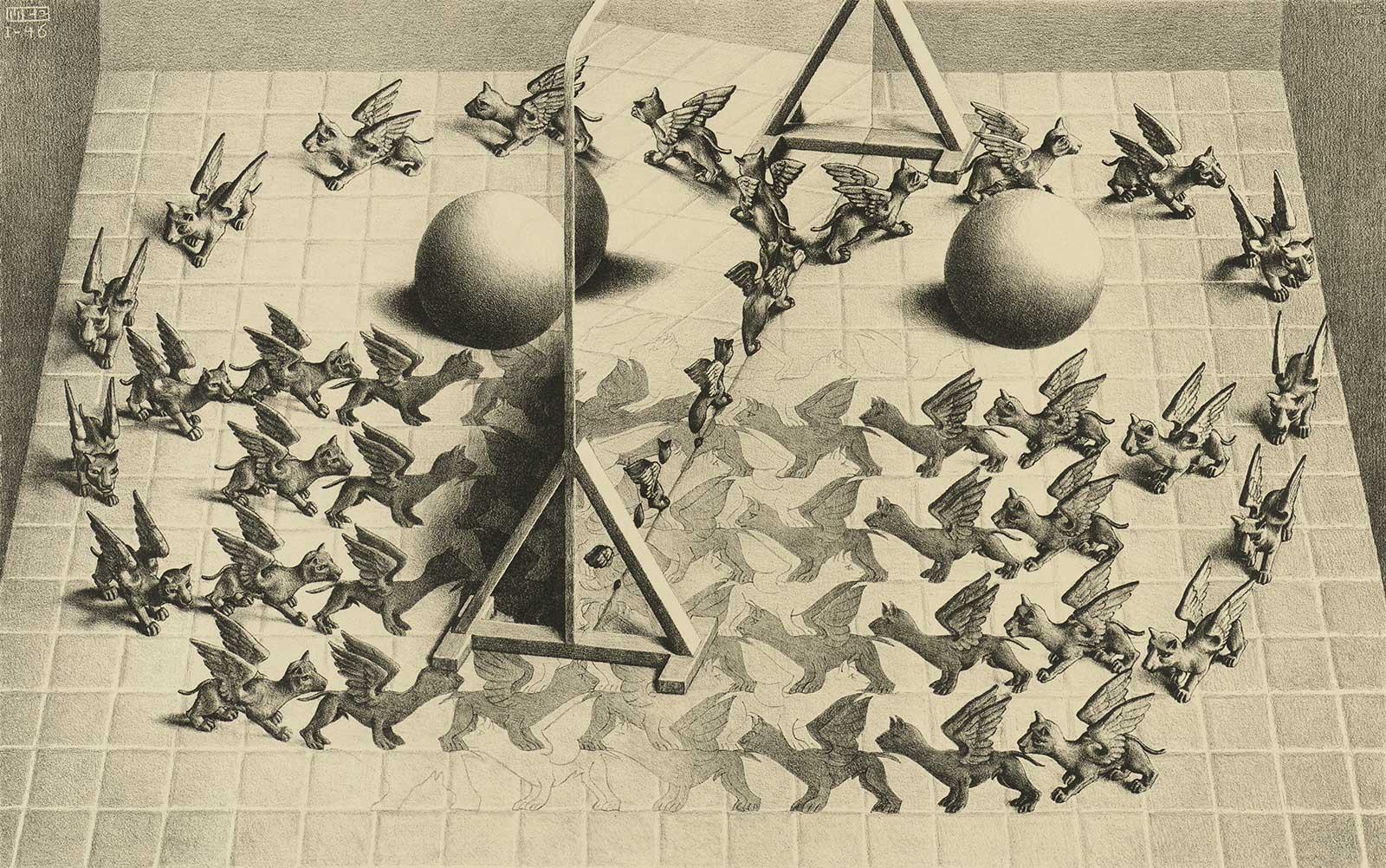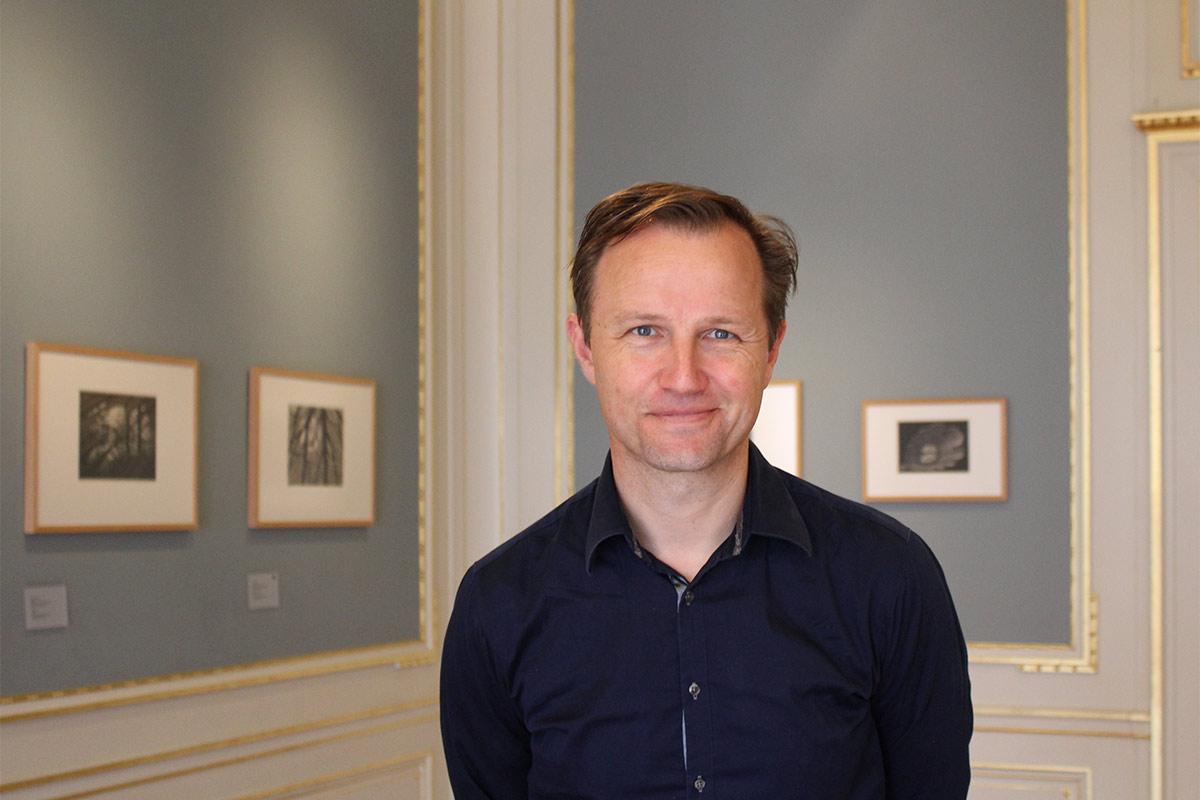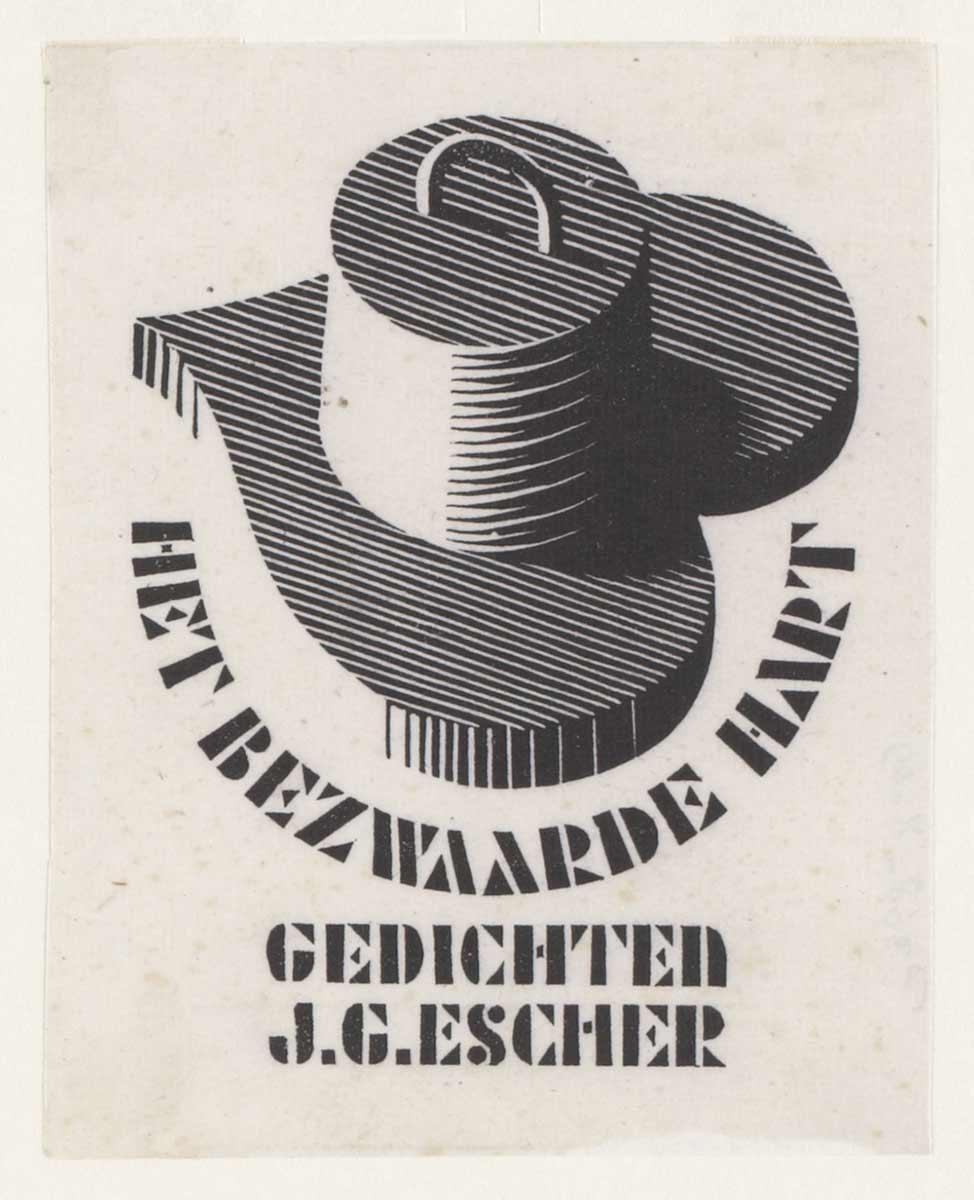

A large exhibition was held in the Stedelijk Museum in February 1962 to celebrate the 50th jubilee of De Grafische, the association for the promotion of graphic arts. Naturally, Escher participated, as did his friend Gerd Arntz, and many other fellow graphic artists. It was not exactly the first time that graphic artists were exhibiting together and under the name of their association, but they had never done it so lavishly as they did for the jubilee exhibition. Under the title ‘Print’, 300 works were displayed at the Stedelijk Museum. Graphic work of all types, drawing on the most diverse styles, methods and opinions. A separate room was set up to devote attention to the history of graphic arts and provide an explanation of graphic techniques. The exhibition also saw the debut of the documentary De Zwarte Tampon (The Black Tampon), made by graphic artist (in this case scriptwriter and director) Harry van Kruiningen and photographer (here he did camera and editing) Ulkoja.
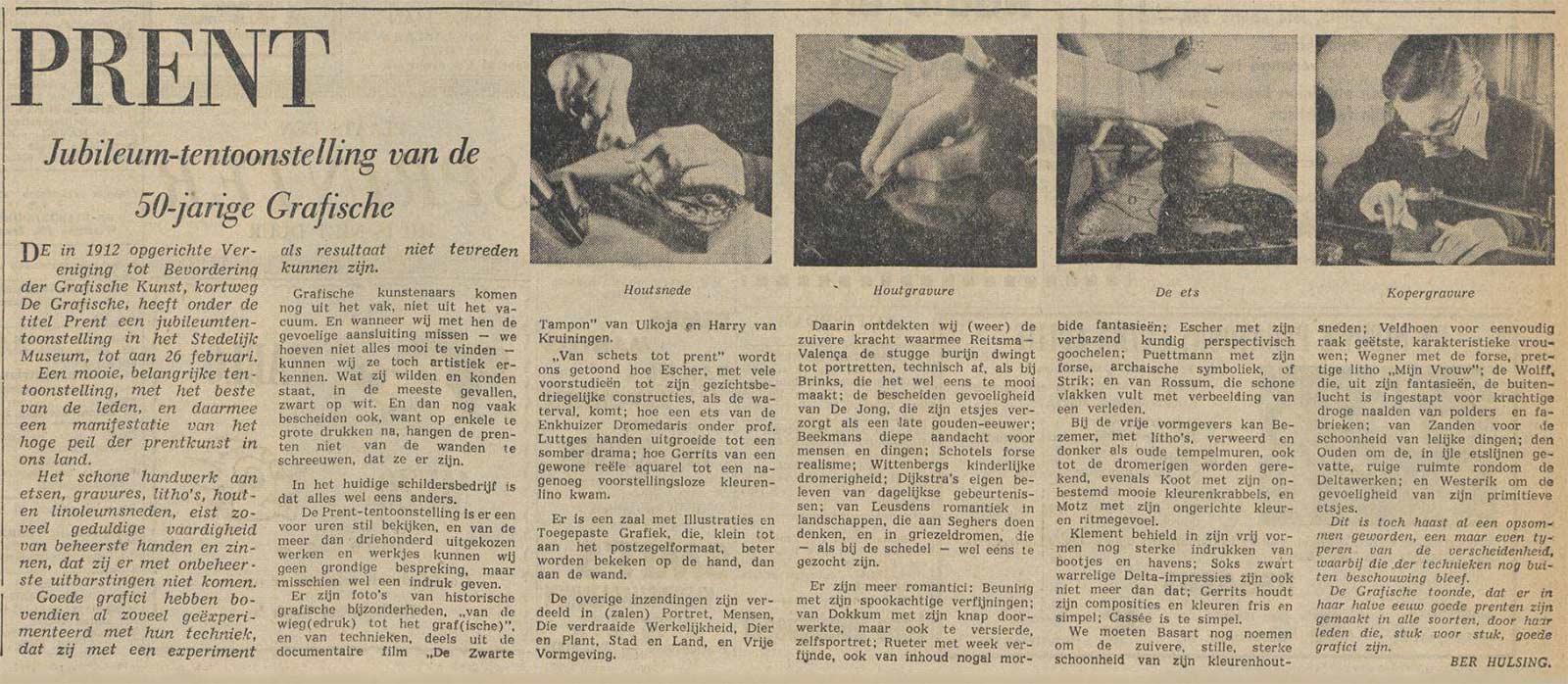

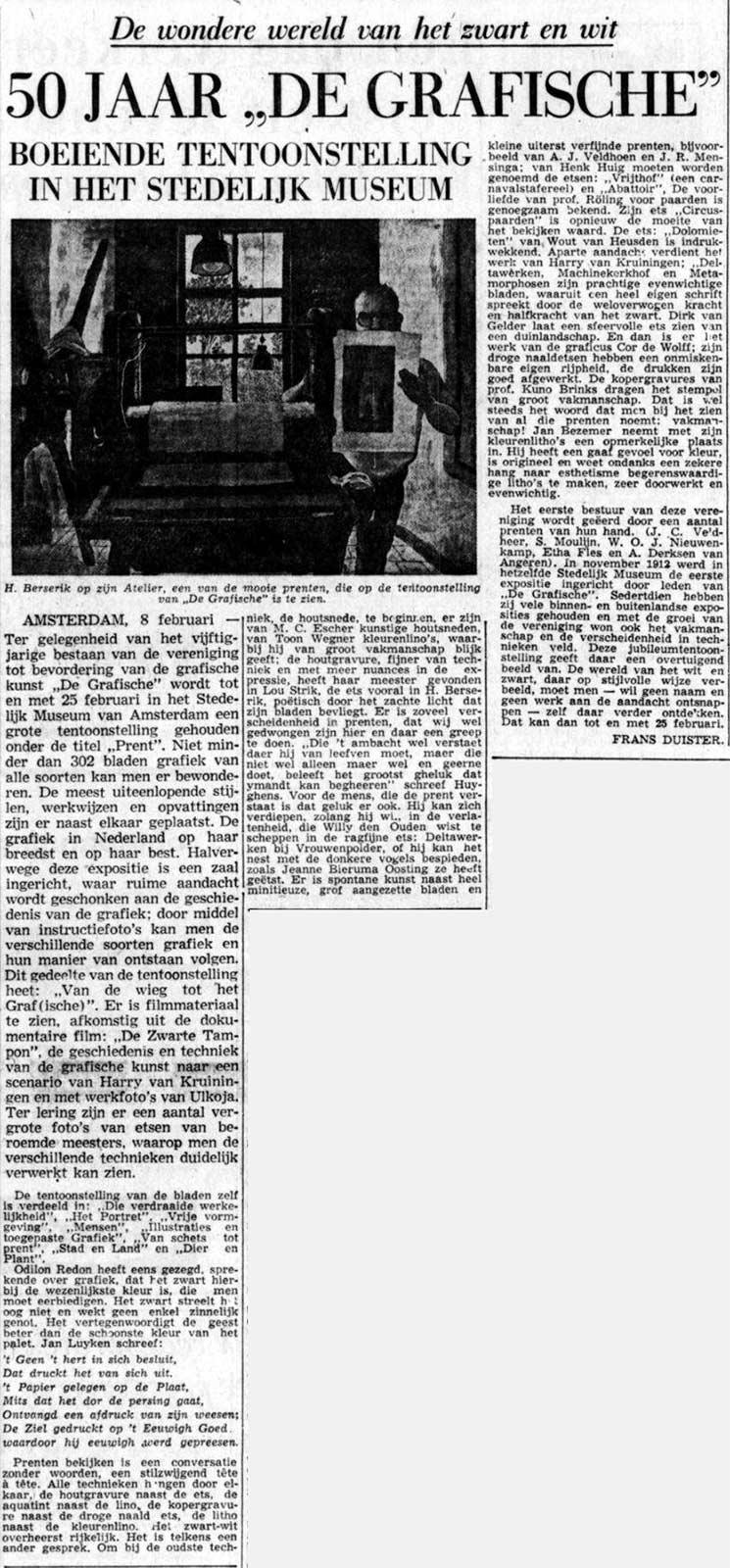
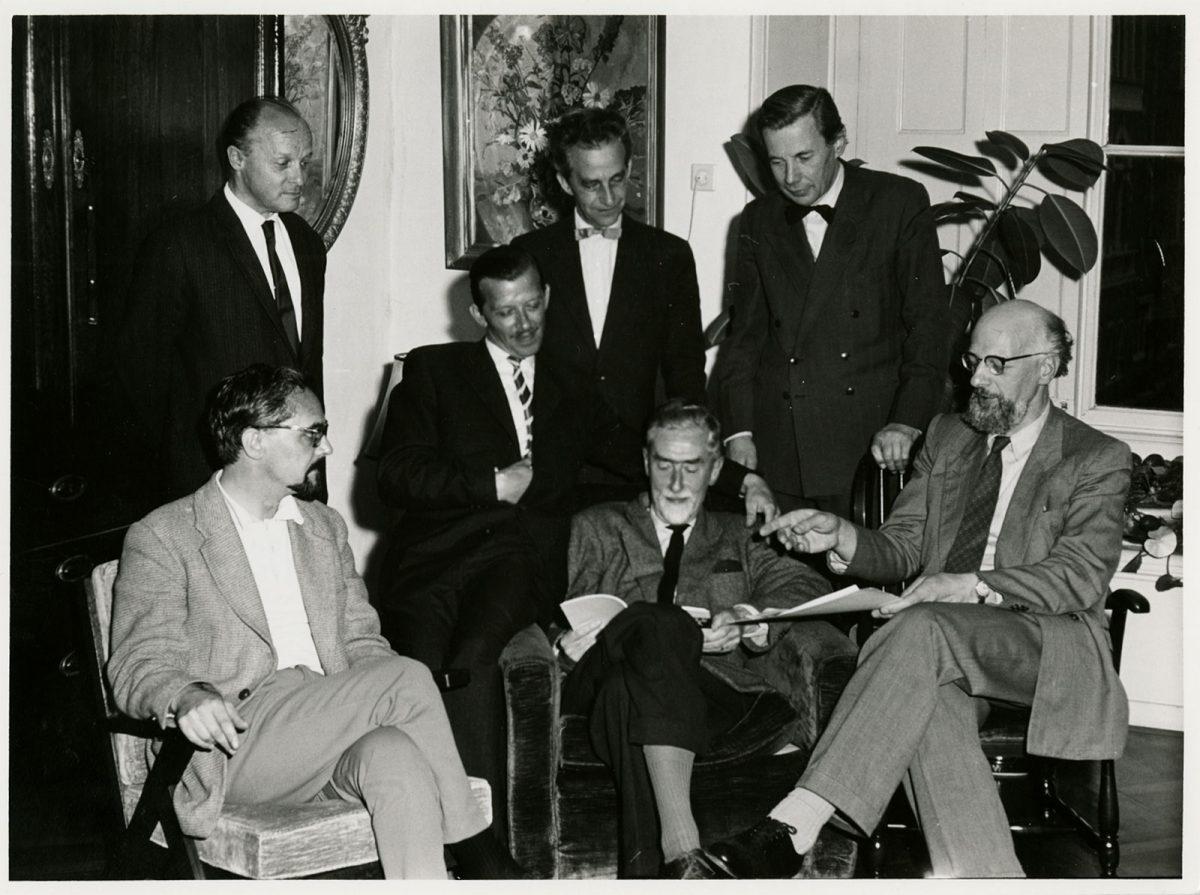
Escher with his fellow board members of 'De Grafische', July 1960. From left to right, standing: Gerd Arntz, Jan Bezemer, Pam Rueter. Seated: Lou Strik, Cor Basart, M.C. Escher and Hans van Dokkum. For many years Escher was the archivist of this association to stimulate Graphic Arts.
To many artists, De Grafische meant a lot in the course of its existence, because the association enabled members to exhibit and sell their work. Exhibitions held by the association stood for quality, a seal of approval for the general public, who were thus assured of getting to know all the developments in the graphic field. The participating artists could also view and discuss each other’s works. About 200 graphic artists held membership of De Grafische in the 20th century.

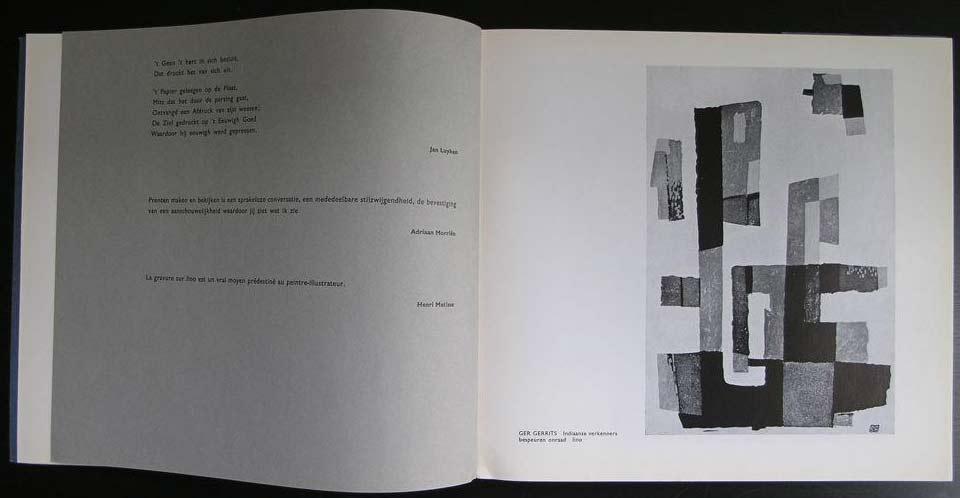
At the jubilee exhibition, M.C. Escher exhibited such pieces as his wood engravings Möbius Strip I and Depth.
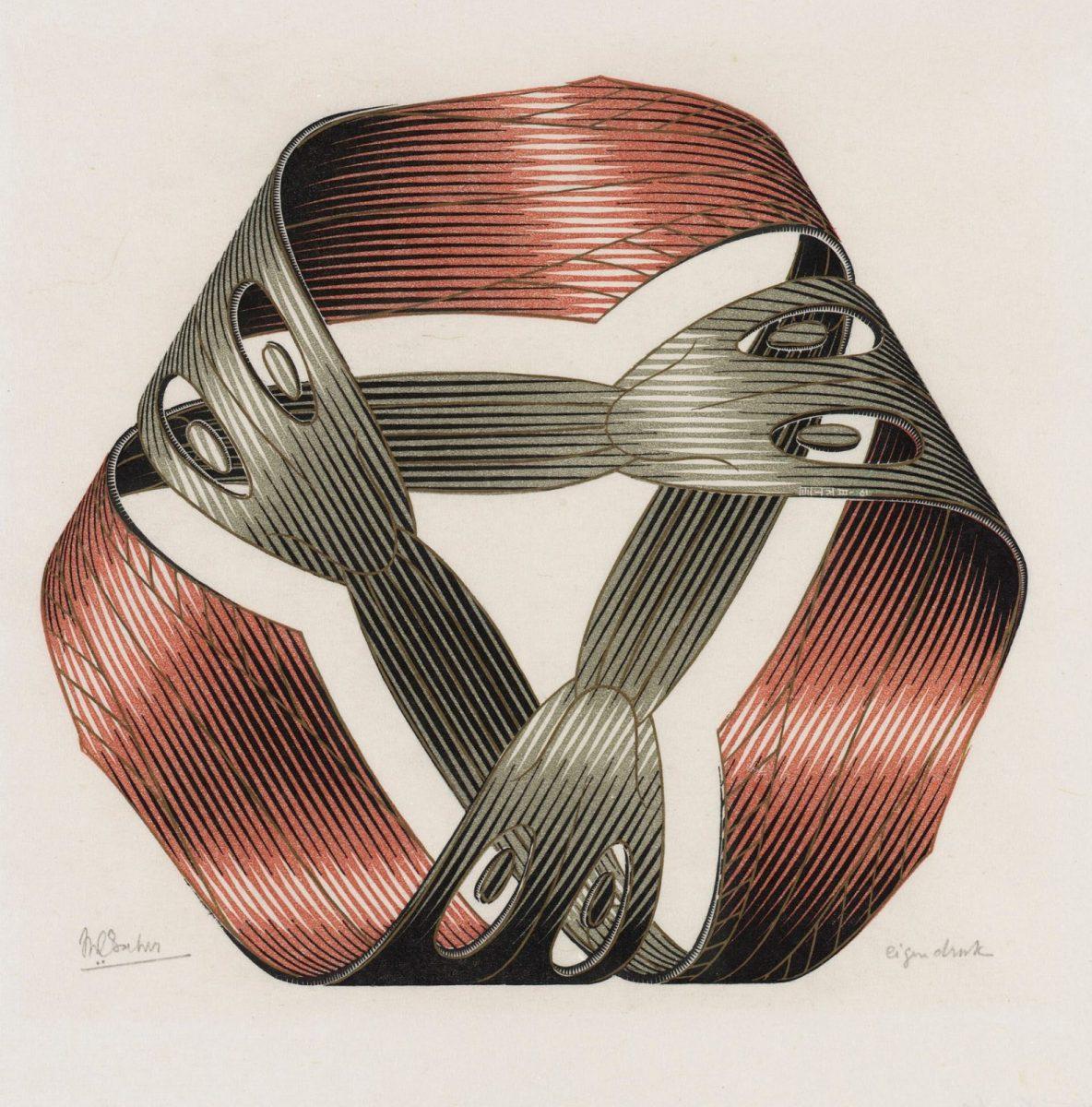

Here are a number of works by artists who were represented at the jubilee exhibition, giving a good impression of its diversity.
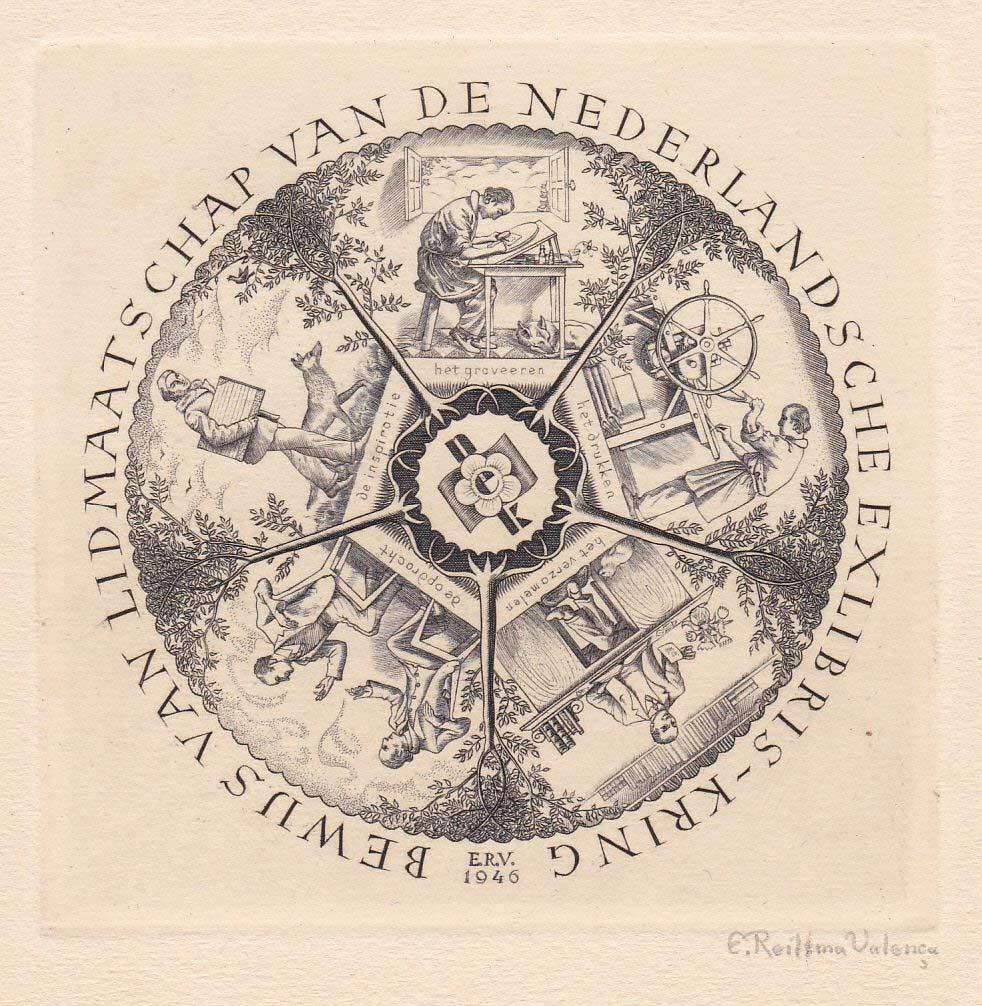

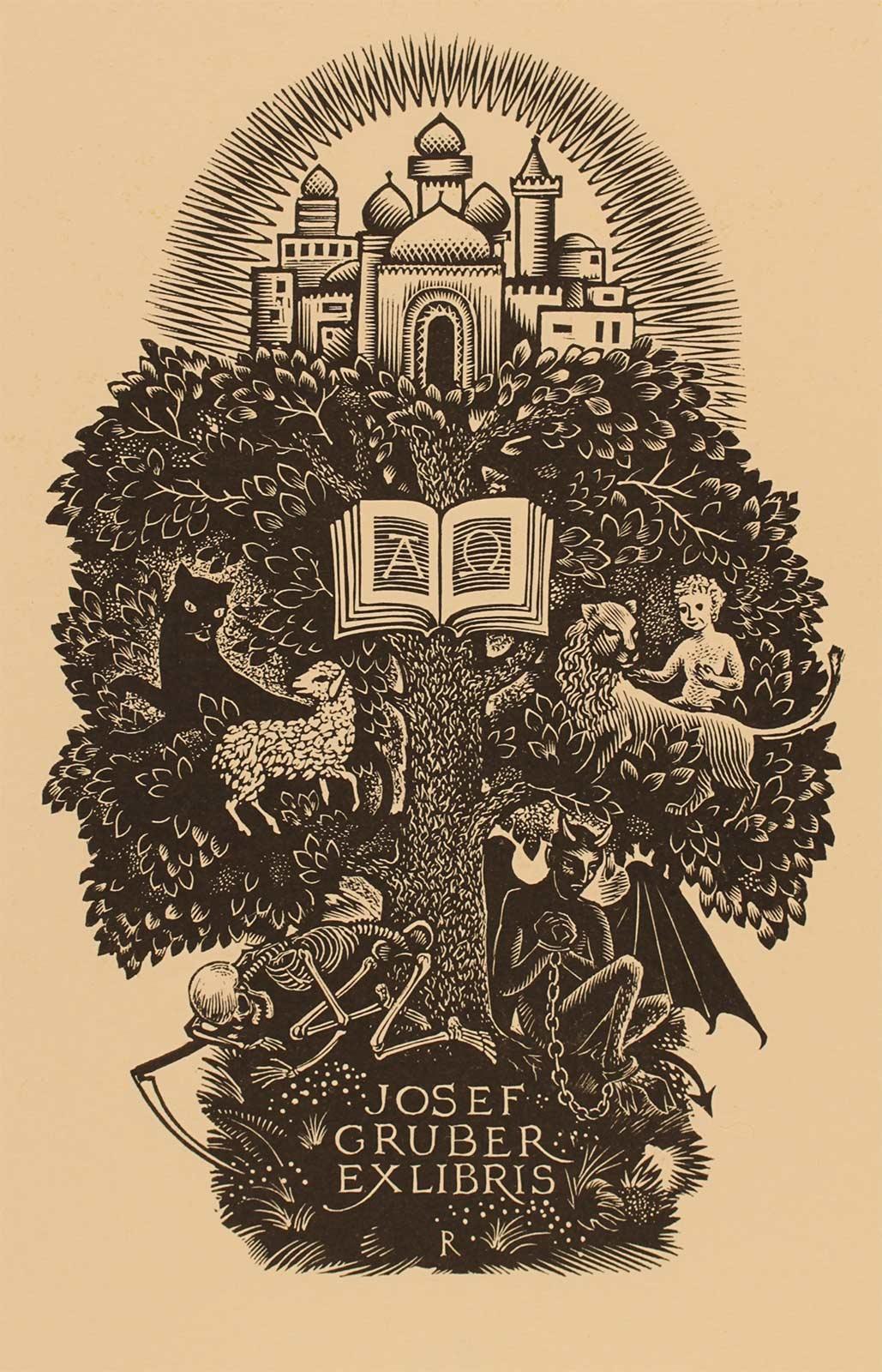
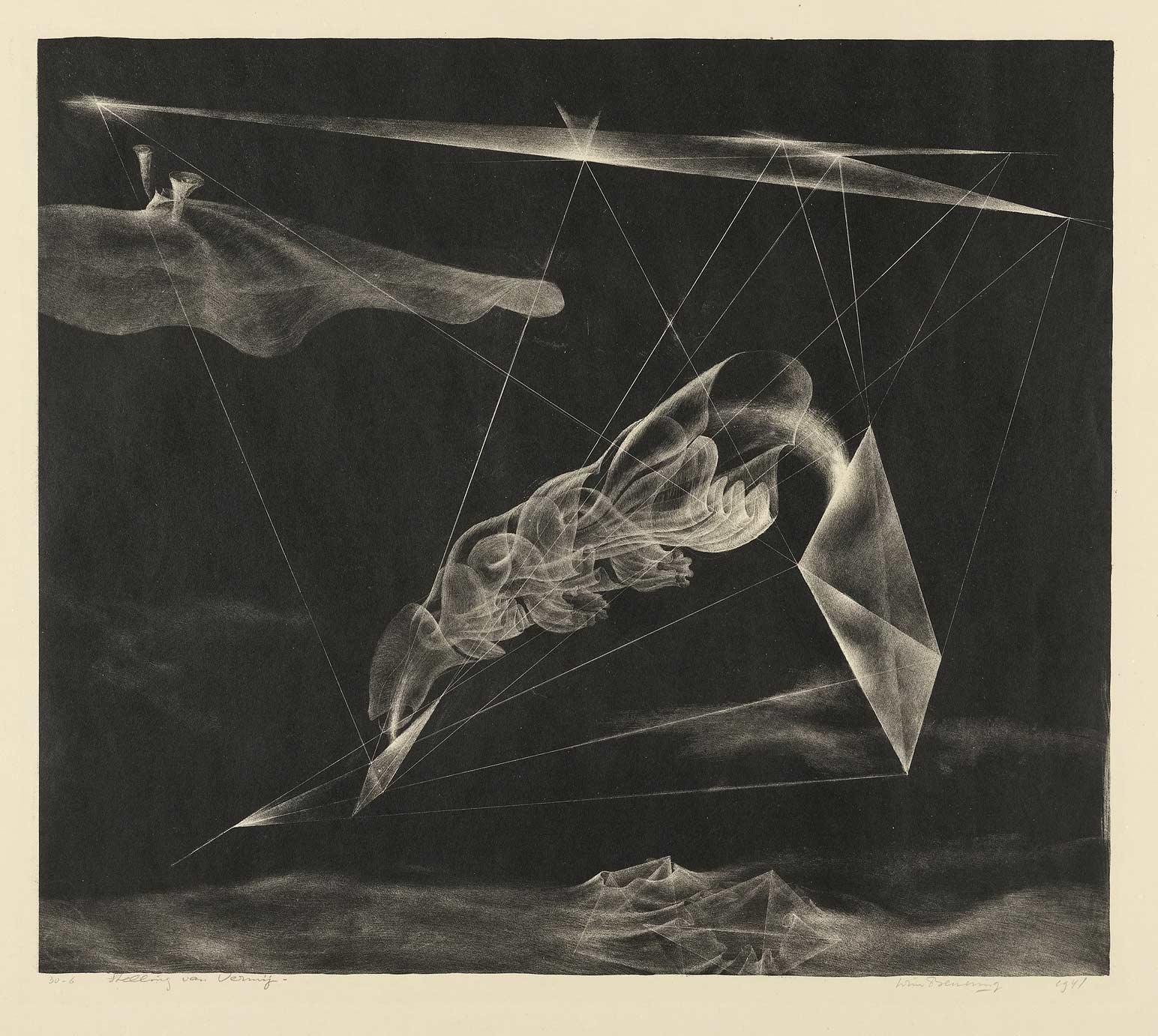
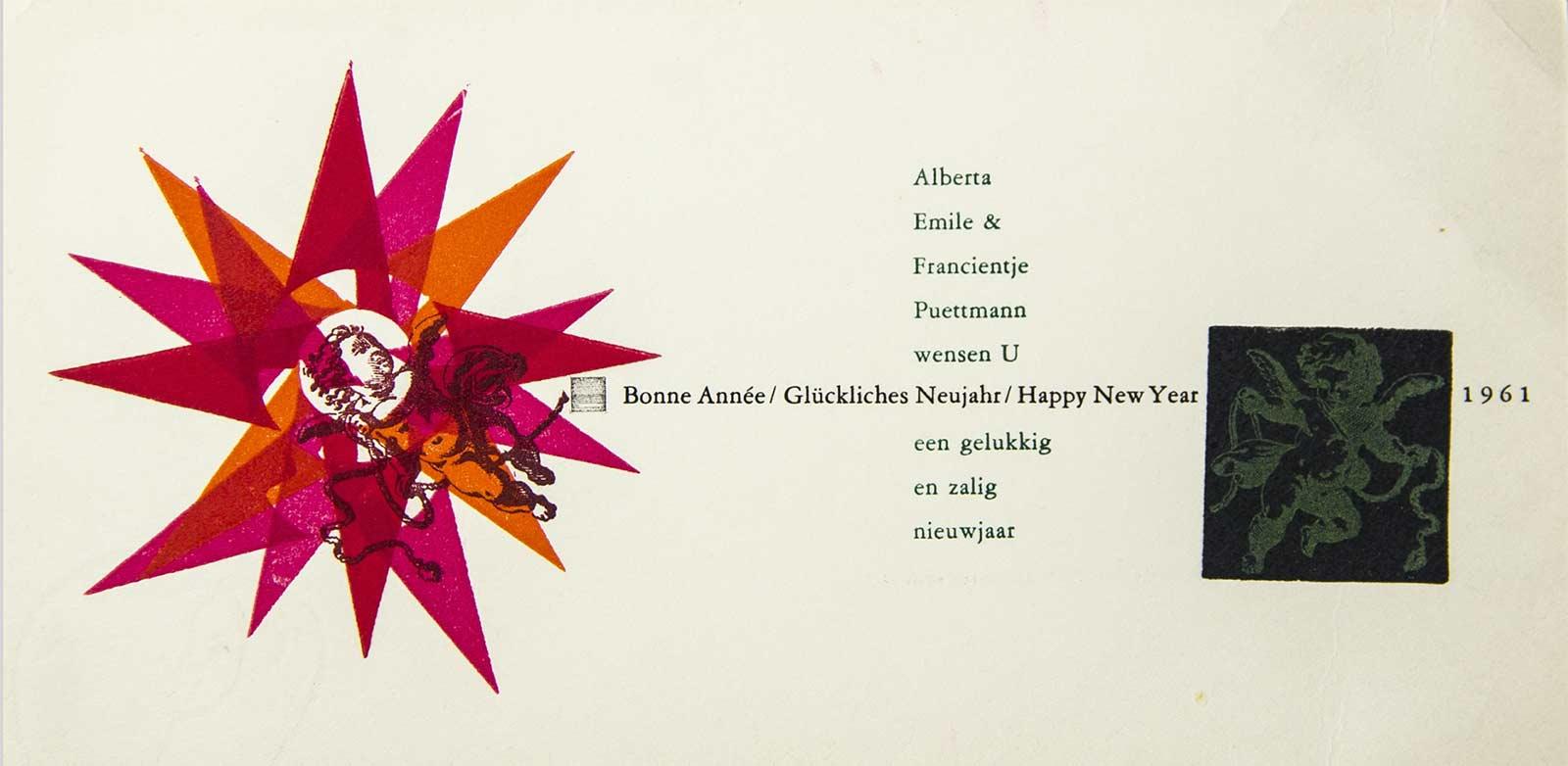
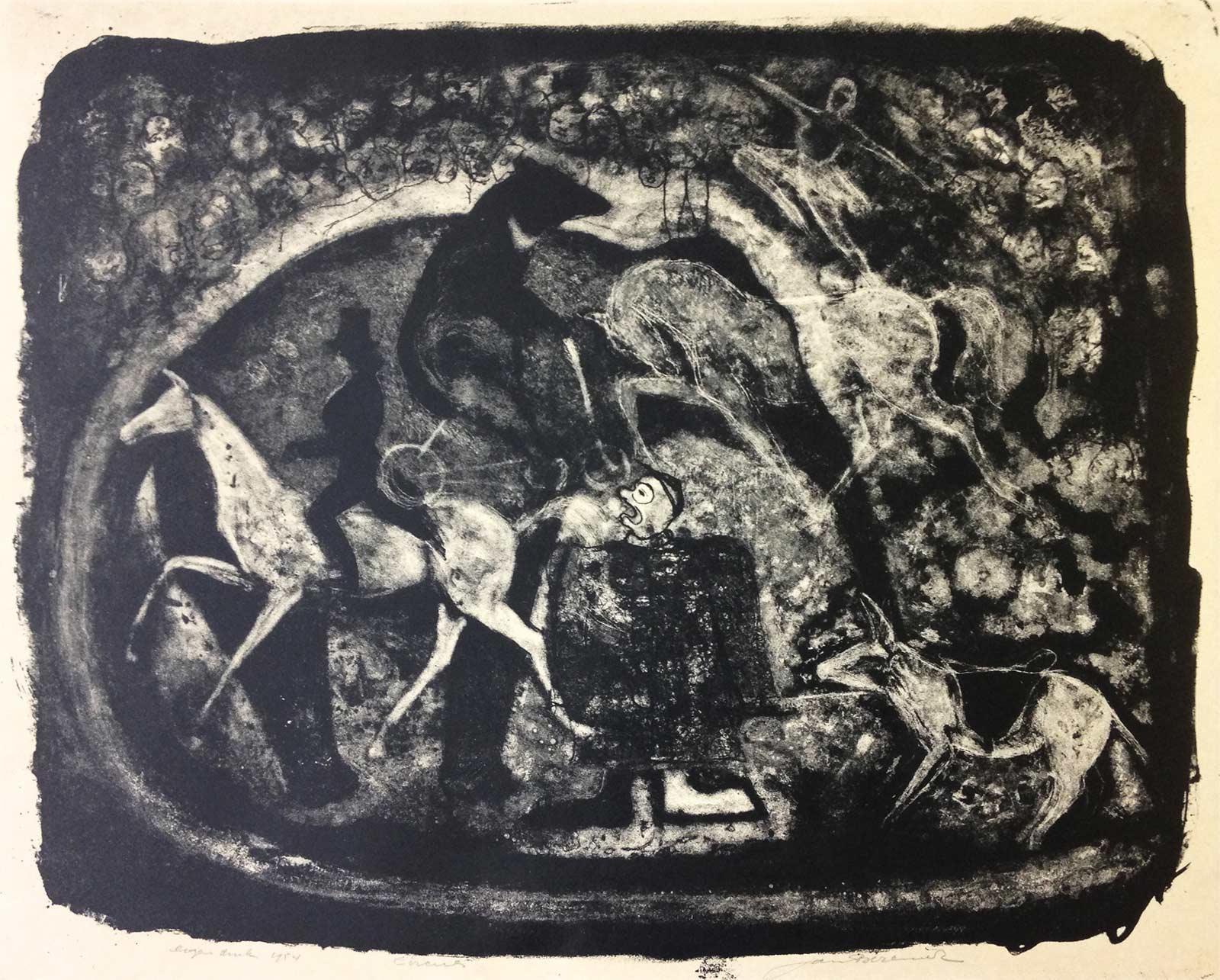
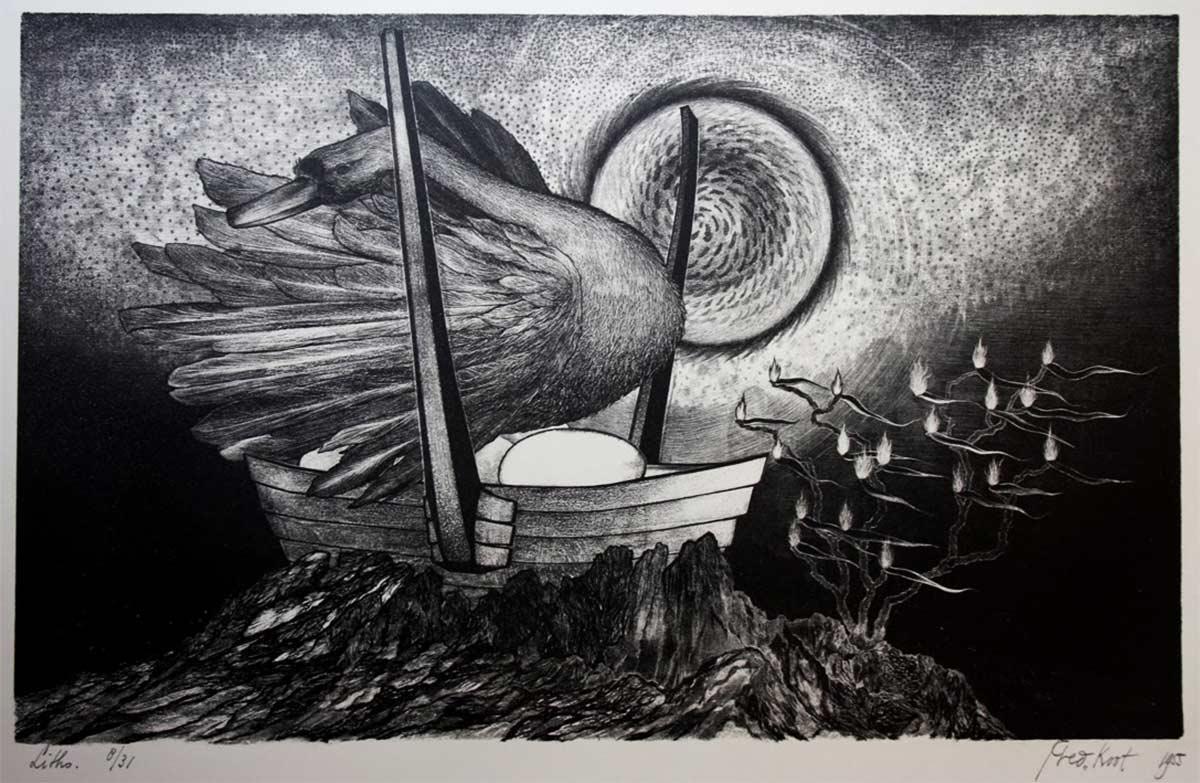
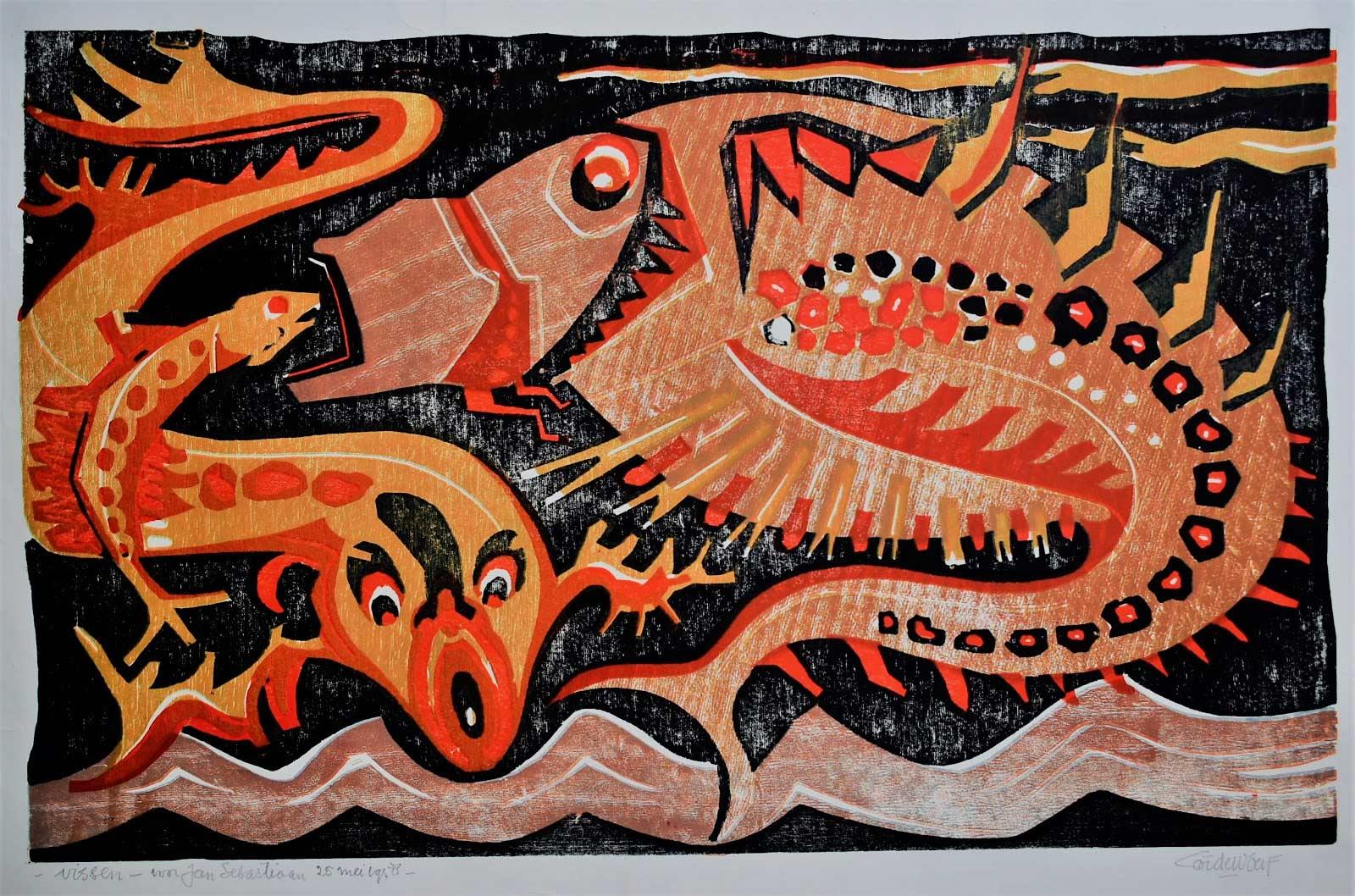
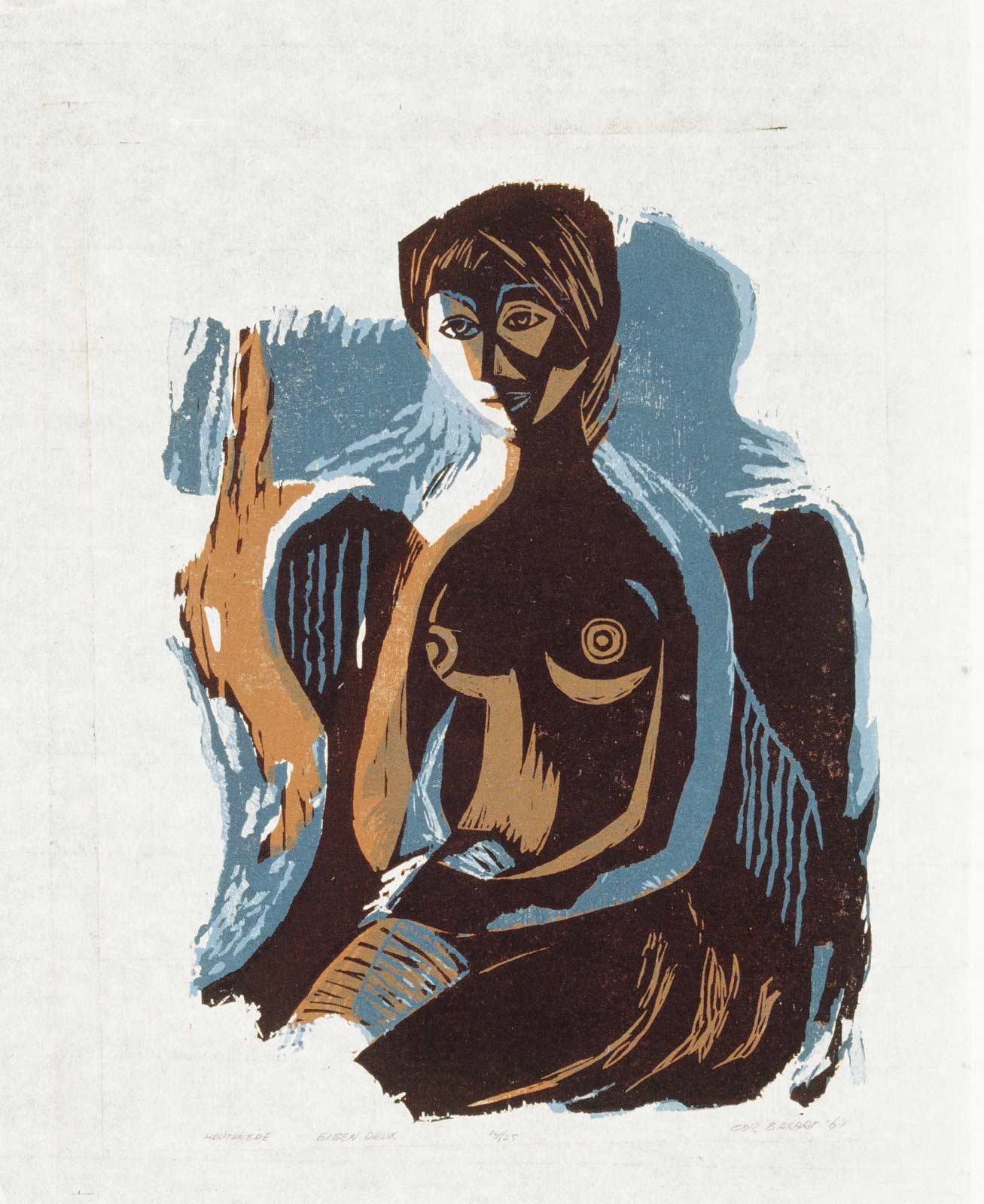
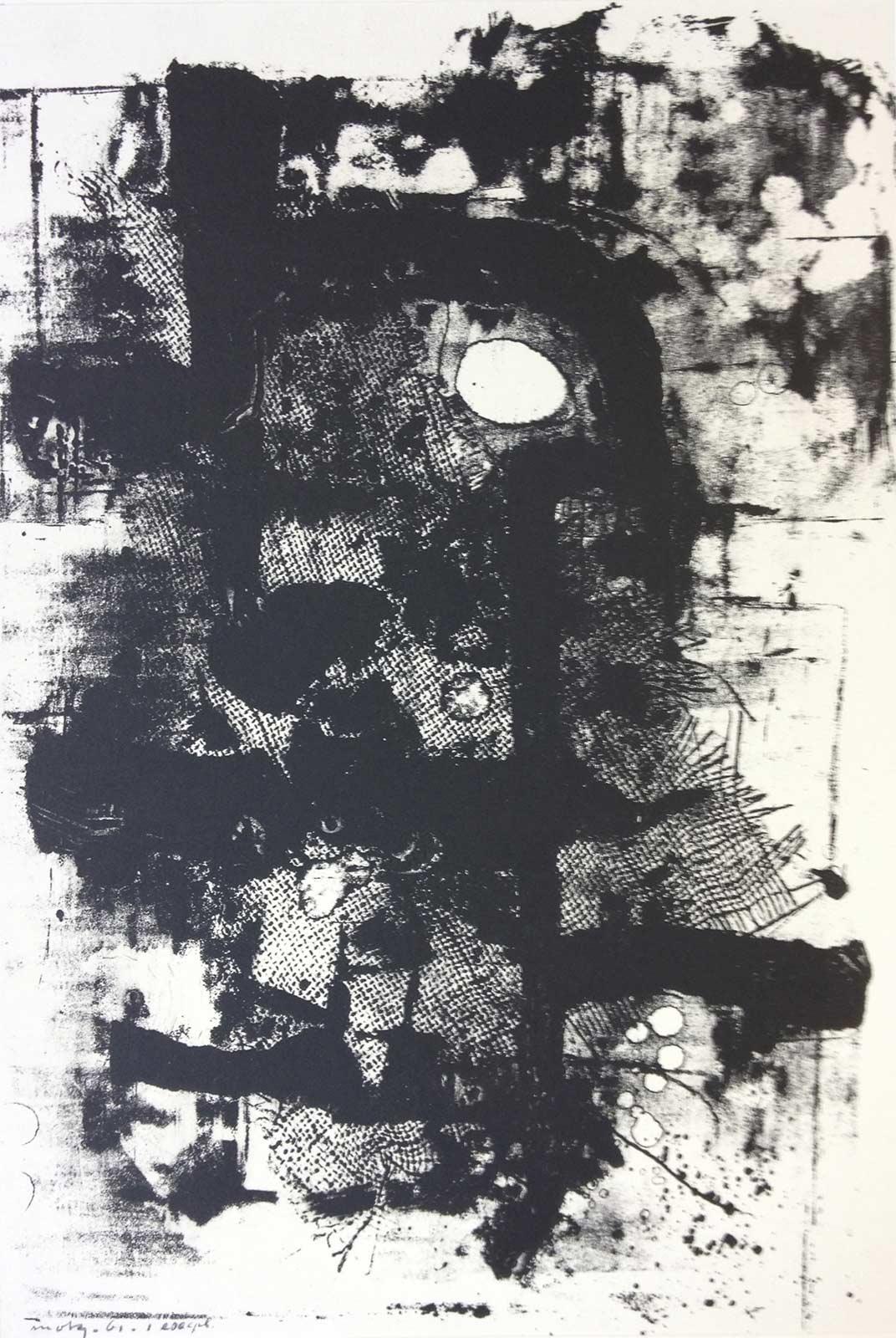
More Escher today

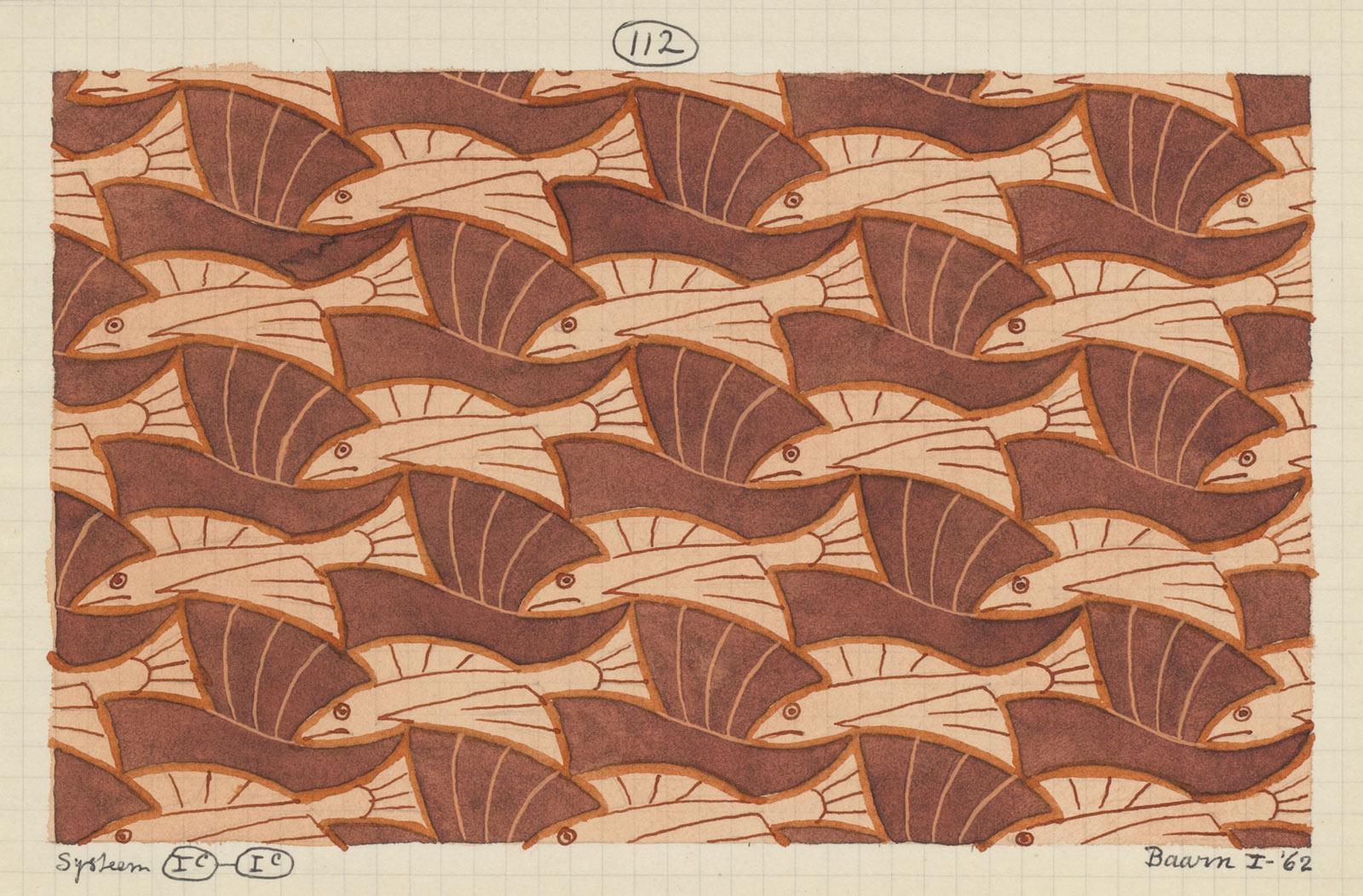
Flying fish, birds and boats in Haarlem
